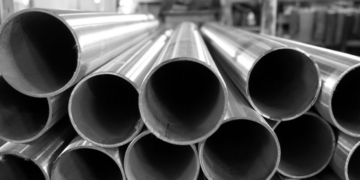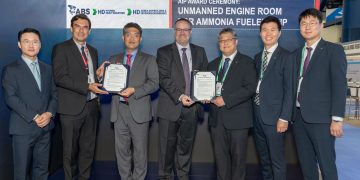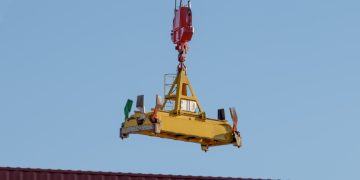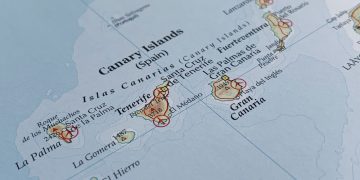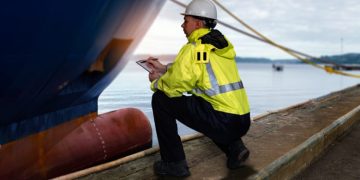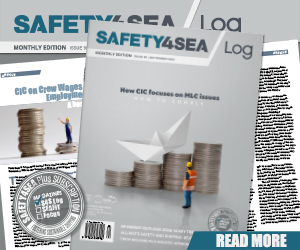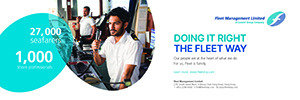Tag: ship engines
Filter By:
FilterWartsila X62 fuel efficient engine gets fully approved
The first Wärtsilä X62 two-stroke engine has successfully passed its design validation and type approval tests and has performed exceptionally well during the necessary sea trials. It is, therefore, now ready for full market availability. The Wärtsilä X62 is the latest in Wärtsilä’s X-Generation of engines that was introduced in 2012 and which has been well received by the marine sector. Thus far orders have been received for 127 X-Generation engines. These engines feature a high stroke-to-bore ratio, thus achieving a lower engine speed and reduced brake specific fuel consumption (BSFC). Most prominently, the X62 incorporates Wärtsilä’s second generation electronically controlled, common-rail fuel injection system. The system facilitates high levels of combustion efficiency to give exceptional fuel savings across the entire load range of the engine. Another important feature of the Wärtsilä X-Generation engines is that a single electronic control system, the Wärtsilä UNIC, controls the fuel injection, the exhaust valve operation, and the cylinder lubrication. This allows excellent flexibility in the optimised operation of the engine. The first Wärtsilä X62 engines to enter actual service will be used to power four 115,000 dwt LR2 product tankers being built for the Greek ship owner Kyklades Maritime Corp at the Gunsan ...
Read moreBroken bolts on Wartsila Engines
Broken bolts on Wartsila Engines
Read moreYANMAR America Announces First EPA Compliant Commercial Marine Engine
YANMAR America has announced the introduction of its new EPA Tier III compliant commercial marine diesel engine. Rated at 755 mHP and 1900 RPM, the new 20.38-liter 6AYAM-ET uses a fully mechanical control system for easy servicing and reliable performance. The four-cycle, in-line six-cylinder 6AYAM-ET offers several key features and benefits that make it a top choice for commercial vessel operators. First, the torque characteristics allow for stable cruising with the least amount of speed reduction even with sudden load changes. The engine also offers its globally acclaimed low fuel consumption and a continuous rating suitable for river push boats, tugboats, trawlers and other applications with uninterrupted operations or load cycles. Plus, a 500-hour service interval aided by a purpose-built marine design featuring a long stroke, water cooled exhaust manifold, special coated liner and nodular cast iron piston with coated piston rings assure minimum downtime to keep vessels on the water and out of the shop. To comply with emissions regulations, the 6AYAM-ET uses an internal exhaust gas recirculation (EGR) system. This design does not require any external control devices or significant engine structure changes. In addition, the micro-sized multiple holes in the all-new injectors produce an even finer fuel ...
Read moreTenneco introduces large engine SCR system
Tenneco announced that it has introduced a complete urea dosing control, fluid handling and catalyst solution for selective catalytic reduction (SCR) after treatment, enabling large engines to meet EPA Tier IV and IMO Tier III regulations. The company will showcase the complete system at the 2014 WorkBoat Show in New Orleans Dec. 3-5, 2014 (Booth #2152). The system is designed specifically for high-horsepower engines in the marine, stationary and locomotive markets, providing precise and reliable delivery of liquid urea. It includes a proprietary, high-performance injector design, a precision mechatronic fluid delivery pump and customizable remote monitoring and controls. “We’re excited to introduce an advanced SCR system specifically designed and purpose-built for large engine applications,” said Timothy Jackson, chief technology officer, Tenneco. “The system provides a turnkey dosing solution which is compatible with a wide range of engine and after treatment architectures, and is supported by Tenneco’s extensive full systems integration expertise.” Tenneco’s large engine SCR system is designed to meet the requirements of major maritime classification societies including the ABS (American Bureau of Shipping), DNV (Det Norske Veritas), CCS (China Classification Society), KR (Korean Register of Shipping) and Class NK (Nippon Kaiji Kyokai). The system is currently being validated with ...
Read moreWartsila and MAN initiate research project to minimize emissions
The HERCULES R&D programme to develop large engine technologies, which was initiated in 2004 as a joint vision by the two major European engine manufacturing groups, Wärtsilä and MAN Diesel & Turbo, is to continue with a new HERCULES-2 project, pending approval under the Horizon 2020 EU Framework Programme for Research and Innovation. The HERCULES-2 project is aimed at developing a fuel-flexible marine engine that is optimally adaptive to its operating environment. The work will focus on four areas of integrated R&D divided into Work Package Groups (WPG), as follows: WPG 1 - a fuel flexible engine; WPG II - new materials (for engine applications); WPG III - an adaptive powerplant for lifetime performance; and WPG IV - a near zero emissions engine. This work will build upon and surpass the targets of the previous HERCULES projects by going beyond the limits set by the regulatory authorities. By combining the very latest technologies, and through the use of integrated solutions, the new project aims to achieve significant reductions in fuel consumption and exhaust emissions. The project includes several full-scale prototypes and shipboard demonstrators that will speed the development of commercially available products. This co-operation between Wärtsilä and MAN Diesel & ...
Read moreMAN announces new turbocharger series
MAN Diesel & Turbo has announced the development of a new turbocharger series specifically matched to the requirements of two-stroke engines. For the first time ever, MAN Diesel & Turbo will develop a turbocharger series exclusively for two-stroke engines that is especially designed and optimised to fulfill Tier III requirements. Compared to the TCA turbocharger range, successfully introduced by the company during the last decade, TCT efficiency shows an increase of 5% through using newly-developed compressor and turbine-wheel geometry, consequently increasing waste-heat-recovery potential by 30%. The TCT range will also deliver a 10% greater air flow at a turbocharging pressure 25% higher, while being 30% smaller and 40% lighter than the existing TCA range. MAN Diesel & Turbo reports that the first TCT turbocharger is expected to reach the market in 2016 after an extensive validation and field-testing programme. Dirk Balthasar, Head of Sales and Promotion - Turbocharger Business Unit - MAN Diesel & Turbo, said: "Modern turbochargers must meet many demands, including meeting technical requirements - such as Tier III compliance - at the most competitive price, having small dimensions to facilitate installation in cramped spaces, not to mention characteristics such as high operational reliability, low maintenance frequencies and ...
Read moreBulk carrier adopts Wartsila Dual-Fuel engine technology
The increasing use of LNG as a marine fuel is further emphasised with the latest order for Wärtsilä's dual-fuel engine technology
Read moreAlfa Laval announces PureSOx 2.0 scrubber
With January 2015 and the enforcement of Emission Control Areas (ECAs) rapidly approaching, Alfa Laval has launched a new generation of the scrubber with a wide range of enhancements and options: PureSOx 2.0. Smaller and more flexible, PureSOx 2.0 suits an even wider range of vessels and offers benefits from the design stage to ongoing operation. These include new placement possibilities and lower installation costs, as well as the option of powder dosing in closed-loop mode. "PureSOx 2.0 retains the well-documented PureSOx strengths," says René Diks, Alfa Laval Manager Marketing & Sales, Exhaust Gas Cleaning. "What it adds are new advances that reinforce the system's position at the leading edge of marine scrubber technology." PureSOx 2.0 is not a departure, but rather a milestone in a continuous development process. Though refined with experience over time, the proven PureSOx technology is still fundamentally the same as that of the very first PureSOx system, which still serves the two-stroke 21 MW main engine aboard the DFDS Ficaria Seaways. "Every PureSOx system ever installed is in use and operating within ECA limits," says Diks, who points out that PureSOx today has more references than any other single SOx scrubber technology. "PureSOx 2.0 is ...
Read moreWartsila approves cylinder oil that mitigates the effects of cold corrosion
Mobilgard 5100 has received an NOL from Wärtsilä after demonstrating its ability to mitigate the effects of cold corrosion in two-stroke marine engines
Read more

















